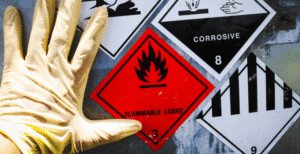Defining Fume and Smoke
Fume and smoke are two terms that describe particles in the air. A fume is a mist or vapor that comes from solid materials, especially when they are heated. For example, when metal is melted, it can create fumes. Smoke, on the other hand, is made of tiny particles that come from burning things, like wood or paper. Both fume and smoke can be harmful to health, but they come from different sources.
Understanding the difference between fume and smoke is very important, especially in industries. Many factories create both fumes and smoke. Knowing how to manage these particles helps improve air quality. Good air quality is essential for the safety of workers and the environment. By recognizing what fume and smoke are, people can take steps to reduce their effects.
Composition and Characteristics of Fumes
Fumes are typically gases or vapors released when a material is heated or burned. These fumes often contain solid particles that form when the gas cools down. For example, metal oxides can come from metals that change into gas and then back into solid.
Fumes can be harmful because they may contain toxic substances. They are usually invisible or can look like a haze in the air.
Here are key characteristics of fumes:
- Fumes are produced by heating or burning materials.
- They may contain solid particles from gas that cools down.
- Fumes can include toxic substances that are harmful to health.
- They are often invisible or appear as a light haze in the air.
Composition and Characteristics of Smoke
Smoke is a collection of tiny particles and gases produced by incomplete combustion. When something burns, it does not always turn into ash and gas completely. Instead, smoke forms from the leftover materials. Smoke is visible and can change color based on what is burned. For example, burning wood might create gray smoke, while burning plastic can produce black smoke. It contains a mix of airborne solids, liquids, and gases. Some of these gases include carbon monoxide, which is harmful, carbon dioxide, which plants need, and particulate matter, which can affect air quality.
Health Implications of Fume and Smoke Exposure
Health implications of fume and smoke exposure can be serious. Breathing in fumes and smoke can lead to various health problems. It is important to understand these risks.
- Respiratory issues: Fumes and smoke can irritate the lungs. This may cause coughing, wheezing, and difficulty breathing. People with asthma may feel worse when exposed.
- Cardiovascular problems: Fumes can harm the heart and blood vessels. This can lead to high blood pressure and increase the risk of heart attacks.
- Cancer risk: Long-term exposure to smoke may increase the chance of developing cancer. Some substances in smoke are known to be cancer-causing.
- Smaller particles: Fumes have smaller particles that can go deep into the lungs. This makes them more dangerous than larger particles. These tiny particles can enter the bloodstream and cause more health issues.
Being aware of the health risks can help people take steps to protect themselves from fume and smoke exposure.
Industrial Sources of Fume and Smoke
Industrial sources of fume and smoke come from various processes. These processes can affect the air quality in workplaces. It is important to monitor and control these emissions to keep workers safe.
- Welding is one common process that produces fumes. When metal is heated and melted, it releases smoke and tiny particles into the air. These fumes can be harmful to workers if they breathe them in. Monitoring air quality helps to ensure that welding fumes do not reach dangerous levels.
- Smelting is another process that creates smoke. In smelting, metals are extracted from their ores. This process generates a lot of heat and releases gases and particles. The smoke can contain harmful substances. Controlling emissions from smelting is key to protecting workers’ health and the environment.
- Chemical manufacturing also produces fumes. Many chemicals are made in factories, and their production can release toxic gases. These emissions can pose serious risks to workers and nearby communities. It is essential to monitor these fumes closely. Proper control measures can help reduce their impact on air quality.
Overall, monitoring and controlling fumes and smoke from industrial processes is crucial. It protects workers and helps maintain a healthy work environment.
Monitoring and Controlling Fume and Smoke in Industrial Settings
Monitoring and controlling fumes and smoke in industrial settings is important for safety and health. Here are some strategies to help manage these issues:
- Air Filtration Systems: Install air filtration systems to clean the air. These systems remove harmful particles and gases from the workplace.
- Regular Air Quality Assessments: Conduct regular air quality assessments. This will help find out if the air is safe to breathe. Workers should check the levels of fumes and smoke often.
- Adherence to Safety Regulations: Follow safety regulations strictly. These rules are in place to protect workers from harmful exposure to fumes and smoke.
- Effective Ventilation: Use effective ventilation to keep the air fresh. This means having good airflow in the workplace. Proper ventilation helps to remove smoke and fumes quickly.
- Personal Protective Equipment (PPE): Provide personal protective equipment (PPE) for workers. PPE, like masks and respirators, protects workers from inhaling harmful fumes and smoke.
- Training for Workers: Train workers on how to use equipment and recognize dangers. Well-informed workers can help maintain a safe working environment.
- Emergency Plans: Have emergency plans ready. In case of high levels of smoke or fumes, workers should know what to do to stay safe.
Intensiv-Filter Himenviro: Leading Solutions for Industrial Filtration
Intensiv-Filter Himenviro is a global leader in industrial filtration solutions. They provide advanced technology to help industries filter air and keep it clean. They focus on creating solutions that are good for the environment. Their goal is to ensure that companies follow environmental rules while improving air quality.
Intensiv-Filter Himenviro offers various services. They create filters for different industries like manufacturing, food processing, and waste management. Their products help remove harmful particles from the air. This makes the air safer for workers and the community. They also customize solutions to fit the specific needs of each industry.
Intensiv-Filter Himenviro uses cutting-edge technology to make their filters more efficient. This means their products work better and last longer. They also focus on sustainability, which means they care about the planet. Their solutions help reduce waste and lower energy use.
They believe that cleaner air is essential for everyone. By supporting businesses with their filtration needs, Intensiv-Filter Himenviro helps create a healthier environment. Their commitment to high standards and innovation sets them apart in the industry.
Conclusion: Importance of Understanding and Managing Fume and Smoke
Understanding and managing fume and smoke is very important for health and safety. Fumes come from metals and chemicals, while smoke comes from burning materials. It is crucial to know the difference because they can affect health in different ways. Fumes can cause long-term health problems, while smoke can lead to immediate issues like breathing problems.
Industries should focus on controlling these hazards. Effective control measures include proper ventilation and using protective gear. Investing in advanced filtration solutions can help keep the air clean. This protects workers and makes sure the industry follows environmental rules.
Industries need to evaluate their current air quality management practices. Protecting health and the environment should be a priority.



